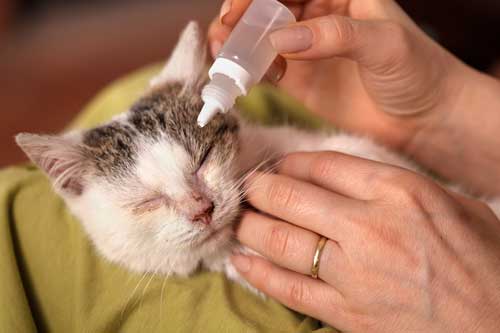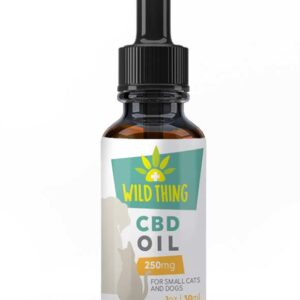Without our eyes, we’d literally be lost. This is why it’s so important to recognize and treat cat eye infection symptoms as soon as possible to determine the cause, type of illness and what the method of treatment will be. Cat eye infections are a common occurrence in cats, it’s important not to ignore the signs as most eye infections in cats can be very painful, uncomfortable and can lead to more serious illnesses down the road. What are some treatments for cat eye ailments? Can you use coconut oil for cat eye infections?! What types of cat eye infections are there? Here we will look into how to recognize cat eye infections and review some of the kitten eye infection remedies – yes, that coconut cat eye infections one wasn’t a joke! – for your feline’s next cat eye ailment.
Types of Cat Eye Infections and Cat Eye Ailments
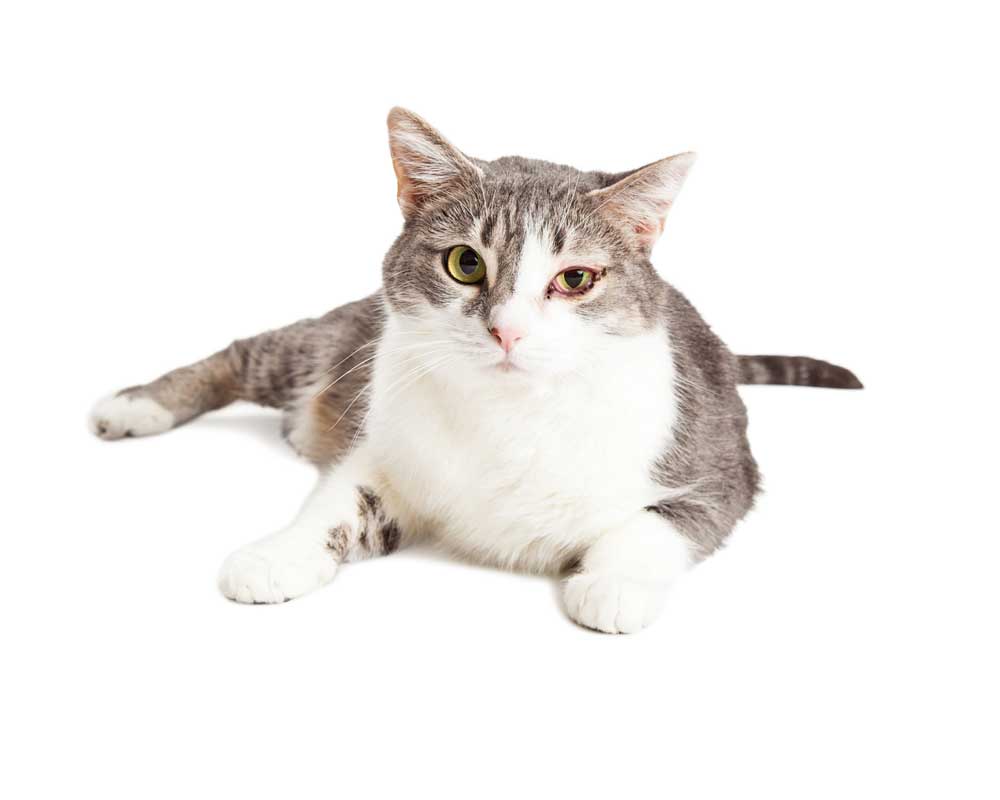
There are a wide variety of cat eye infections and cat eye problems that range from non-serious to potentially life threatening if not treated. Many cat eye infections are extremely contagious and it is recommended that those who have a cat with an eye infection to avoid other cats to reduce the spreading of the eye infection. Cats eyes should be bright and clear, if your cat is pawing at their eye, squinting or blinking excessively then they potentially have a problem with their eye.
Keratoconjunctivitis Sicca (Dry Eye)
Keratoconjunctivitis Sicca (Dry Eye) is one of the more common eye conditions found in cats. Keratoconjunctivitis is when a cats eyes cannot produce an adequate amount of natural tears which keep the eye moisturized. This is an important to keep the eye functioning properly.
Conjunctivitis
Better known as Pink Eye, conjunctivitis is when the pink membrane located within the inside of the eyeball and the inner eyelids is inflamed. When this occurs your cats eye will swell and become red with possible discharge as well. This is due to a bacteria or a virus infection within the eye.
Blepharitis
This is a condition that also refers to inflammation or an infection of the eyelids. Blepharitis usually targets the outer skin or the middle of the cats eyelids, this can include the muscle, connective tissue and glands within the eyelid. The most common causes of blepharitis are allergies, infections, tumors congenital abnormalities and possibly inflammatory disorders. Cat blepharitis treatments should always be sought at your local veterinarian as this condition can worsen and lead to other long-term ocular issues without proper treatments.
Keratitis
The inflammation of the cornea which is the outer layer of the front of a cat’s eyeball, specifically Keratitis is when a cat’s cornea doesn’t retain its fluorescent stain. When keratitis occurs, the symptoms will include a cloudy or watery appearance of the eye.
Third Eye Protrusion
Is when a cats third eyelid becomes visible or starts to cross her eye, this usually points towards of a potential wound, worm, diarrhea or a viral infection.
Feline upper respiratory infections
A discharge of the eye can come from a variety of respirator viruses such as:
- Calicivirus
- Contagious Respirator Disease
- Pneumonitis
- Rhinotracheitis
- Bacteria
- Protozoa
Symptoms and Causes of Feline Eye Infections
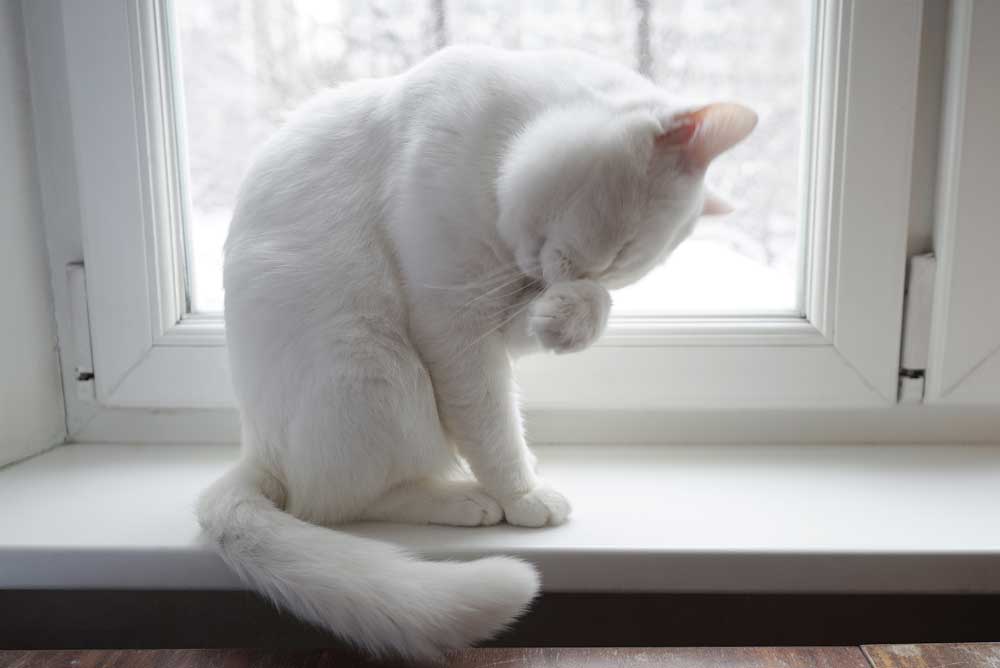
When trying to identify eye infections in cats symptoms it’s important to know what a healthy cat eye looks like first. The three main indicators of a healthy eye are that they are bright, they are clear and that they aren’t swollen or puffy (no redness). Other healthy indicators are that your cats eye should be equal in size, no excessive sleep in the corner of the eye, no bulging or cloudiness. Certain types of cat eye infections will degrade all these qualities, but sometimes your cat will only exhibit one or a couple symptoms.
Eye infection in cats symptoms are quite obvious, and because we’re always using eye-contact with our pets to communicate, detecting when something is wrong with your pet’s eyes is hard to miss. Most cat eye ailments will fall within this list of eye infections in cats symptoms:
- Cat is displaying signs of pain or discomfort in the eye
- A change in the cats eye’s appearance
- Cat becomes extremely sensitive to light
- Watery discharge
- Extensive squinting and blinking
- Cat rubs and scratches the eye or the surrounding area
- Eye looks inflamed or raw
- Swelling and redness around the eyelid or third eyelid
- Constant tearing of the eye
- Cat eyes swollen
When cat eyes are swollen it is usually due to a build up of fluid, when a cats blood vessels in the eye tissue become enlarged the eye begins to produce a discharge. When a cat contracts an infection the cat displays signs of weeping, with the possibility of pus being extracted so it can fight the infection which leads to a thick remedy that sticks the eyelids together. When trying to identify what is causing the infection it’s important to keep an eye.. on the discharge and consistency. When the discharge is yellow or green in color this indicates a fungal bacterial infection, or if the discharge is watery it indicates an possible infection caused by allergies.
Causes
There are many causes that can bring on a cat eye infection, from a viral infection or just simple allergies. It usually comes down to a bacteria getting into the eye or an infection which is especially common in kittens. The most common bacteria found in cat eye infections are Mycoplasma and Chlamydia, while the most common viral issues are Feline Herpesvirus Type 1 and Calicivirus (common found in kittens with weak immune systems) For adult cats the largest reason for contracting an eye infection is from interacting with a cat who is carrying a virus or bacteria already. This is common in small households with more then one cat or stressful environments like an animal shelter. For full grown cats who live independently and have not been in a shelter the cause for an infection may underline a more serious issue such as eye trauma and cancer.
How to Diagnose
The first and most important step is to take your cat to the veterinarian once you suspect something is wrong with their eyes. The vet will preform a basic eye exam, eye evaluation and a physical exam as well. It’s also not uncommon for the veterinarian to check for signs of an upper respirator infection.
In most cases the prognosis for an eye infection is usually positive, most cats completely recover from eye infections. Most antibiotics for cat eye infections are extremely effective and will kill the infection quickly and efficiently.
Kitten Eye Infection Remedies
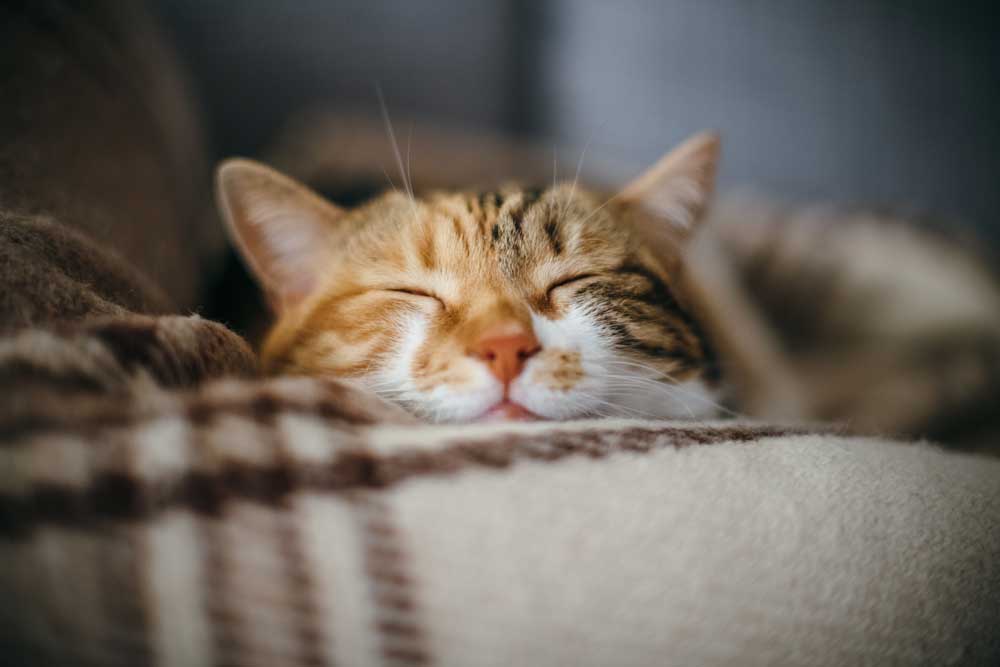
Many eye infections in cats can come from an upper respiratory infection and CBD is showing signs that it can help manage the symptoms.
CBD can support good health: CBD has been shown to help with nasal discomfort in the nasal passage and other symptoms of a URI. CBD interacts with a cats Endocannabinoid System, interacting with the receptors that run throughout our body, when CBD interacts with those receptors it strengthens them, thus helping boost the immune system.
CBD helps to calm your dog or cat: If your cat is sick and is constantly having to take trips to the vet and take antibiotics, this could seriously affect your cats moods and nervousness. When given CBD it interacts with the cats endocannabinoid system which contributes to the serotonin levels in the brain. Serotonin helps regulate moods, CBD helps provide a more calming and relaxing contribution to your cats serotonin levels, therefore providing relief and a more laid back kitty.
Some people have reported success using coconut oil for cat eye infections as well. This might sound very bizarre at first, but coconut oil cat eye infection remedies are simply capitalizing on a basic beneficial property of coconut oil: it is easy-to-absorb and can nourish your pet’s skin & tissues. Coconut oil is popular for cat eye infections because it is a healthy, natural carrier for many pet products.
Coconut oil cat eye infection treatments should be used in moderation, especially until you have a good understanding how your feline reacts/responds to it. As always, check with your vet before giving your pet anything new in their diet or daily routine.
Verlota CBD
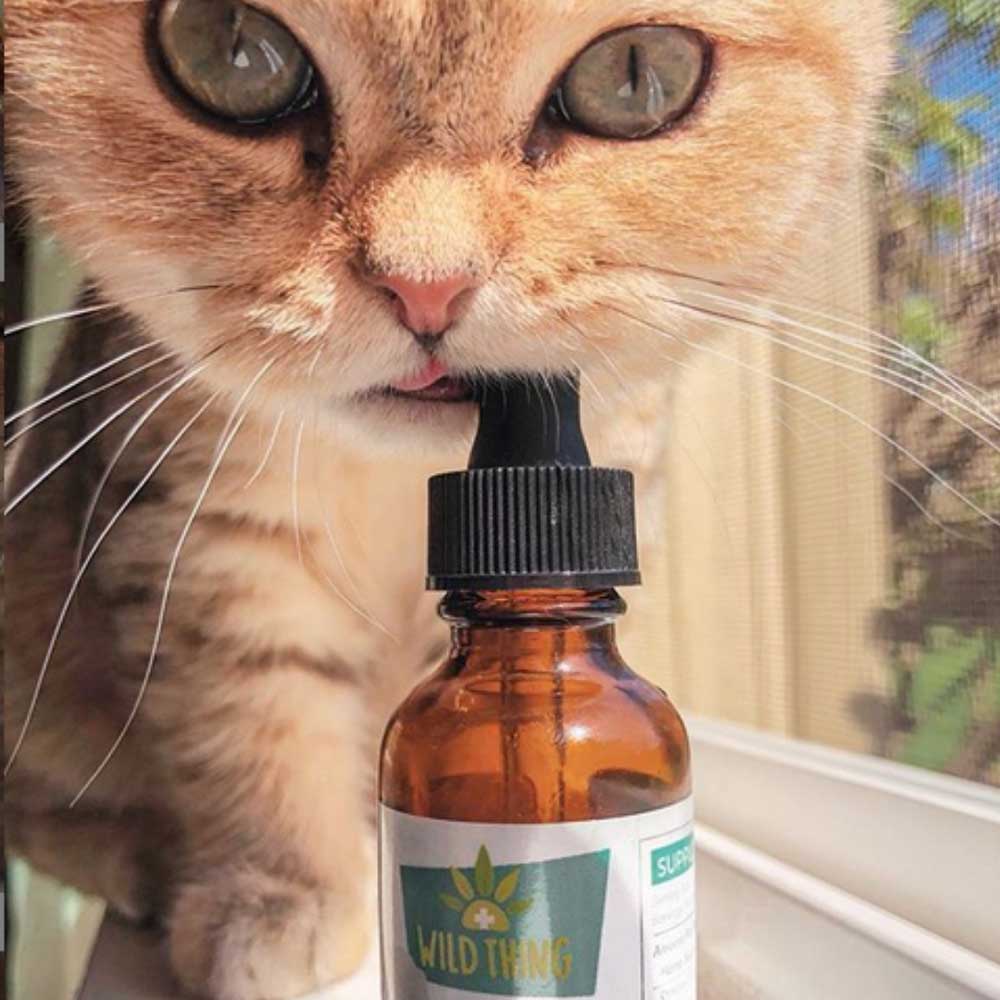
Verlota offers a wide variety of amazing CBD pet products, formulated with pets in mind each one of our CBD pet products is formulated to provide a potent remedy for many of your pet’s ailments. Each one of our products is, 100% THC free = ZERO psychoactive effects, extracted from organically grown, 100% American hemp oil, chemical-free: No solvents, preservatives, herbicides, or pesticides and lab-tested for quality and consistency.
For your cat we recommend any one of our great CBD Pet Oil Tinctures , each is formulated to provide a potent remedy for all your cats aches and pains. Containing 1:1 gram of CBD isolate per gram of oil, this product is one of the most convenient and inexpensive ways to accurately administer pure CBD to your pets. Our hemp derived isolate is prepared using pure crystalline CBD sourced from locally grown hemp plants of the highest quality. The extract is then blended with Medium Chain Triglyceride (MCT) coconut oil; the high bioavailability of coconut makes it an excellent carrier for CBD, our CBD Oil can be added to your pet’s food or administered straight under their tongue – no bite, no bark, no hassle.
If you do decide that CBD is right for your cat make sure to head over to our How To Give Your Cat CBD Oil article. It will show you everything you need to administrate CBD to your cat.
FAQ’s
How can I treat my cat’s eye infection at home?
Try to keep your cat’s eye clean by using a moist cotton ball to wipe away any discharge. Always be sure to wipe from the corner outward, never wipe inwards. Also, refrain from re-using cotton balls/swabs as this can promote contamination from one eye to another.
Is coconut oil toxic to cats?
Coconut oil cat eye infections remedies are generally safe, but always be sure to check with your vet first. Coconut oil is not toxic to cats, but it is not considered to be optimal as part of their diet under all circumstances – some cats do better with it than others. Coconut oil contains healthy fats (medium chain triglycerides), but for some felines the added dietary fats are not conducive to good health & fitness in your pet. Always use coconut oil in moderation and monitor your pet closely whenever you add something to their daily routine.
How do I apply coconut oil to my cat?
Coconut oil makes for a great moisturizer to dry or irritated skin, so it can be applied topically in most cases. Some people use coconut oil for cat eye infections as well to help keep their pet’s eye clear of discharge and to reduce irritation. In other cases coconut oil can be ingested with food or water as a dietary supplement.
Can a cat’s eye infection heal on its own?
Viral infections can often go away with time whereas bacterial infections might require appropriate treatments and remedies. In both types of cat eye infections, given your cat’s healing capabilities, these infections can lead to serious health effects if they persist too long. As always, seek out medical consultation from your veterinarian if you think your cat is suffering from an eye infection.
What can you do for a cat’s irritated eyes?
Try to keep your cat’s eye clean, free of discharge, never use the same cloth or swab for each eye, and treat any irritations or infections as soon as possible to prevent their symptoms from worsening.
Can an eye infection kill a cat?
Eye infections in felines are not typically fatal, but if left unchecked any sort of bacterial or viral infection can lead to very serious health conditions. Preventing an eye infection from morphing into another infection to a separate part of the body is crucial, so keep your pet’s clean, groomed, well-fed and physically active to cut down on their chances of falling ill.
Can conjunctivitis in cats clear up on its own?
In most cases, conjunctivitis can resolve itself in your cat given enough time. However, pay close attention to your cat’s behavior and health cues as certain pets can develop more serious, long-lasting symptoms that require veterinary attention.
How long do cat eye infections last?
Bacterial infections in cats’ eyes typically last 5-15 days, but each feline can experience different symptoms and duration or infection.
What antibiotic is used for cat eye infections?
Consult your veterinarian for any antibiotic treatments for your cat’s eye infection as each State/Country can have different medications available for prescription.

